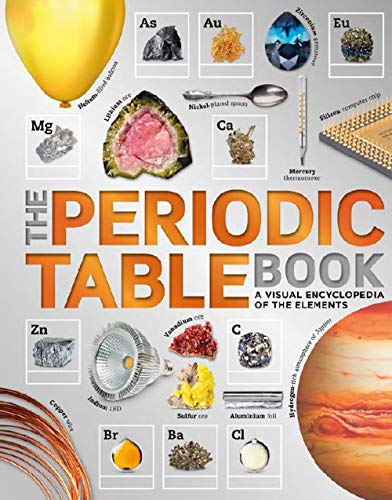The Best Science Encyclopedias for Kids
For information about Coder Kids classes and camps, including online coding and gaming topics, visit register.coderkids.com/onlineclasses.
Most kids are like little scientists trying to figure out the world around them. Their curious minds want to know the “why” and “how” of just about everything – which is pretty much what scientists are trying to figure out, too!
However, a challenge for many parents lies in the ability to provide the right answers, especially if science isn’t their strong suit.
Giving your children one or two science encyclopedias will help them find answers to their questions and bring out the scientist in them. Many of the science books available are designed to support STEM activities and build a solid educational foundation for children.
If you are looking for good science encyclopedias for your kids to encourage the scientist in them or simply to give them answers to their endless questions, here are five excellent options!
Space! The Universe as You’ve Never Seen It Before (Knowledge Encyclopedias)
The sun, moon, stars, and the little-known facts about the universe never fail to mesmerize kids’ young minds. But instead of leaving them confused, Space! is sure to blow their minds with lifelike images and awe-inspiring details of our universe.
Besides vivid pictures, kids will get to learn a ton of information about the solar system, space stations, and more in over 200 pages of this hardcover science encyclopedia.
This will be the perfect gift for kids in grades 5 - 7 who are fascinated about the planets, supernovas, black holes, and our solar system. It contains easy-to-follow infographics, the latest facts about the universe, and even pictures from NASA.
Reading Age: 10 - 17 years
Science Encyclopedia: Atom Smashing, Food Chemistry, Animals, Space, and More!
Give your children everything they need to know about animals, food chemistry, space, robots, wave power, atom crashing, and more with the kid-friendly Science Encyclopedia.
Kids are sure to be wowed by the eye-catching and colorful photographs and will love the amazing statistics and strange (but true) facts contained in the book.
Does your child like to try things out for themselves? This book also includes simple, hands -on experiments kids can do at home.
Apart from presenting useful scientific information, the book also contains profiles of outstanding scientists and explorers who have contributed greatly to science as we now know it.
Reading Age: 8 - 12 years
The Periodic Table Book: A Visual Encyclopedia of the Elements
Vague descriptions of the elements and compounds in a science class are usually quickly forgotten. Want to get these concepts firmly planted in the minds of kids? Get them The Periodic Table Book: A Visual Encyclopedia of the Elements.
This is one of the best science encyclopedias out there! It takes children on a visual tour of all 118 elements of the periodic table. It contains over a thousand crystal-clear photos of natural as well as common items in which the different components are found.
Instead of abstract explanations, kids will understand why and how the elements and compounds are important to their environment. Elements are grouped by type, and the visuals are designed to help kids in STEM activities.
With its captivating pictures of earth’s elements, this big book is available in both hardcover and kindle editions.
Reading Age: 8 - 14 years
Human Body! (Knowledge Encyclopedias)
Perhaps the first thing that captures young minds is the many parts of their bodies and how they function. If your kids are curious to learn what makes them tick, Human Body might be the perfect book!
This hardcover visual encyclopedia is packed with all-new and fascinating computer-generated 3D images that show various parts of the human body in ways children (and even some adults) have never seen before. It also comes in a kindle version.
From the skull all the way to every muscle and joint in the body, human anatomy (how the body looks) and physiology (how the body functions) comes alive in this realistic 3D book. This is an excellent choice for children in grades 4 – 7 (ages 9-13).
If you have kids between the ages of 4 and 8 years (grade K - 3), it is best to get a more age-appropriate version for them. The Human Body Activity Book for Kids is an excellent alternative. It is loaded with tons of fun activities, including mazes, science trivia, connect-the-dots, and crosswords to help younger kids learn about their bodies.
Reading age: 9 - 12 years
Awesome Science Experiments for Kids: 100+ Fun STEM / STEAM Projects and Why They Work
Sometimes your kids might not show a lot of interest in science, even though you know they have great potential for science-related topics. An easy way to pique their interest is to give them hands-on opportunities to try things out themselves.
That’s where Awesome Science Experiments for Kids come in handy. Instead of merely reading about science in textbooks, kids between the ages of 5 to 10 can actually participate in fun and easy science experiments.
This widely popular paperback is designed around STEM education initiatives. Instead of waiting for days (or weeks) to get the book, parents can get the Kindle version immediately. It includes over 100 fun experiments in science, engineering technology, and more.
You don’t have to worry about getting sophisticated equipment because most of the materials used in the experiments are common household items.
Reading age: 5 - 10 years
Conclusion
These science encyclopedias are a great way to get (and keep) kids interested in science. Did we miss any of your favorite science encyclopedias? Let us know in the comments!
If you are looking for a science summer camp, you can check out this blogpost. We talk about all different kinds of cool summer camps (including science and coding)!
As an Amazon Associate, Coder Kids earns from qualifying purchases.
















